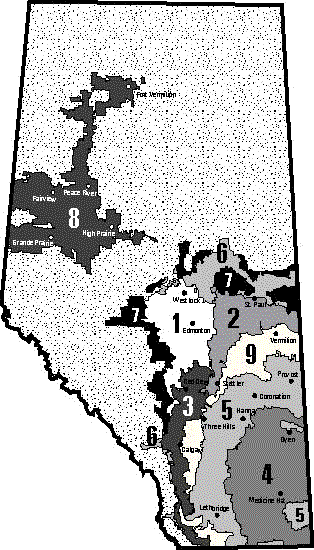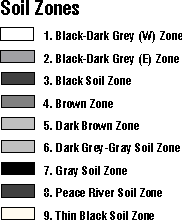| | One of the farm's most important inputs is information. Farmers weigh a large number of variables in deciding what, how and when to plant.
Alberta Management Insights (AMI Information) crop variety and yield information is published by AFSC, in co-operation with Alberta Agriculture and Food, as an on-line service that allows you to find information based on your legal land description.
What is Alberta Management Insights (AMI)?
At its core, AMI is based on actual production results from over 15,000 farms in Alberta that participate in crop insurance. The information is re-packaged in an easy-to-use format to help farmers make better cropping decisions.
Alberta Management Insights is the result of a government partnership. Agriculture Financial Services Corporation (AFSC) is the "manager" of the information and the lead on the project, and Alberta Agriculture, Food and Rural Development (AAFRD) is an integral partner in the development and delivery of the AMI information.
How to Use this Information
This series shows yield data from the main soil zones and the effect of seeding date. Overall, this data shows that all crops benefit from early seeding in most parts of Alberta. Early seeding is an example of a good management practice that improves yield without extra cost! However, time constraints prevent many farmers from seeding all their crops early. Thus, producers must choose which crops to seed first. The yield data from the right soil zone will help producers decide which is the most profitable crop planting sequence for their situation.
The information in the attached charts shows three years of data (1999-2001), so farmers can review seeding date performance under varying weather conditions. The actual weekly frequency of seeding is shown for each crop, and producers can see the "normal" date as well as how many manage to seed early. Management and environmental influences have not been standardized in the data, so caution is advised when interpreting the graphs.
To use this seeding date and yield information most effectively in planning a crop planting sequence, producers should consider the following factors.
| 1. | Compare the effect of seeding date in each year. Does the yield decline after the same date consistently in each year? Is there an initial time period where yield does not fall? Is there a higher yield loss trend in one or two years that indicates a high risk for later seeding? Try not to read too much precision into the weekly differences (for example, 2 or 3 bu/acre difference is often not meaningful). Remember that each end of the curves have the least precision since they are based on the least number of records. Thus large changes at the ends of a curve should be disregarded unless a good explanation can be given. |
2. |
What is the yield loss (bu/acre per week) after any initial plateau? |
3. |
Are higher value grades being pursued with certain crops? For example, edible peas versus feed, malt barley versus feed. Early seeding will be helpful to achieve the higher grades in addition to higher yields. |
4. |
Is the planned seeding date compatible with the crop maturity requirements and the local growing season (average days before killing fall frost)? |
5. |
Considering both yield loss and expected price for the grades being pursued, compare the revenue losses per week. Crops that lose the most revenue per week are the strongest candidates for early seeding. |
How Will I Benefit from AMI Information?
The Alberta Management Insights project is a valuable resource for Alberta farmers because of the detailed and comparative information it contains. Although information of a similar nature is available through other sources, it is based on much smaller test plots.
Information provided through Alberta Management Insights is based on actual seeded (and insured) crops on approximately 9.5 million acres in Alberta - a scale much broader than was previously available in Alberta.
These charts, then, serve as valuable management benchmarks. Farmers can compare yields achieved on their farms to the "real world" area averages to get an indication of how their own crop yields measured up. Decisions can then be made to improve or maintain management practices.
Armed with accurate, regional crop information of this kind, farmers will be able to make better management decisions. That approach ultimately helps improve the farm's bottom line.

 |
|